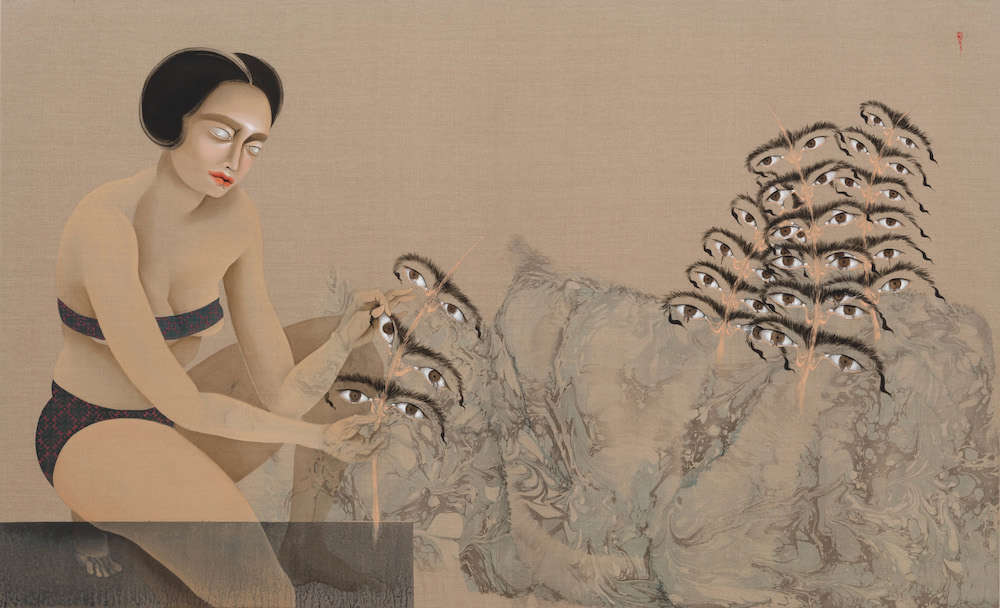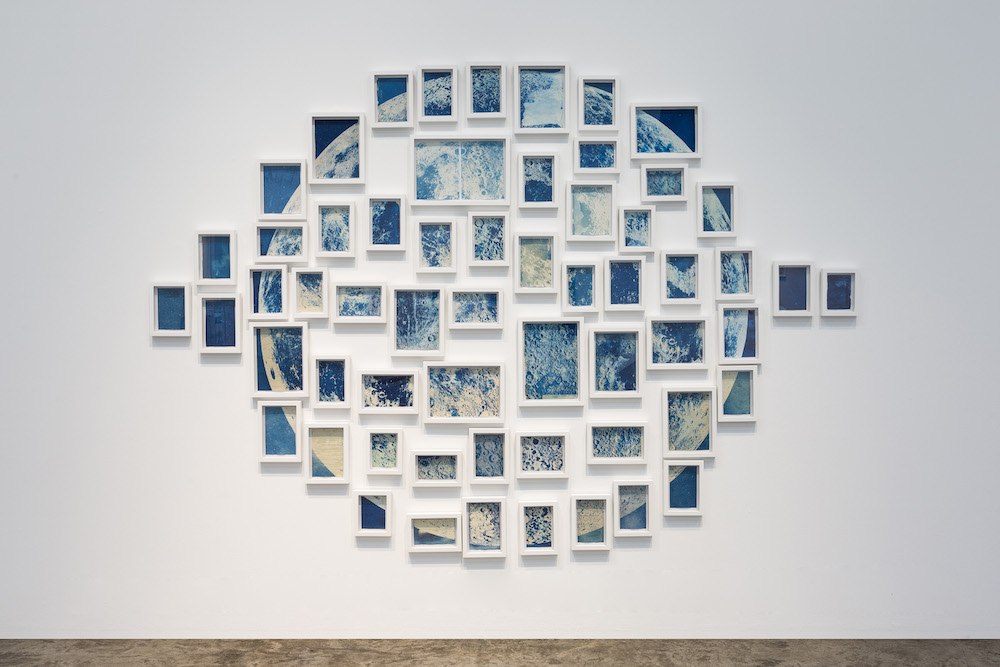Centuries before Leonardo da Vinci lived and worked in Italy, a Persian astronomer, physician, geographer and writer was conducting research into the nature of the cosmos and man’s place in it. Zakariya al-Qazwini (d. 1283) wrote and illustrated The Wonders of Creation and Rarities of Existence (1280), a remarkable 13th-century document cataloging the earth, the heavens and the many forms of life. This fall, The San Diego Museum of Art will take the beautifully illustrated text as a point of departure for an exhibition of works of art, texts, scientific instruments, magic bowls and commissioned works by contemporary artists Hayv Kahraman and Ala Ebtekar.
Ala Ebtekar is the Berkeley-based child of Iranian immigrants, and Kahraman is an Iraqi refugee now based in Los Angeles. Kahraman has used science and geometry, including work with 3D-scanning and mapping, with the female body—her own—as subject and object in her large-scale figure paintings. Often writhing or contorted, the images explore issues of identity and othering.

Hayv Kahraman, Plucked, 2024. Courtesy of the artist and Pilar Corrias.
The “sense of wonder,” with its emphasis on cosmology, is at the core of Ebtekar’s recent work. Coming from a background in painting, he received his BA from the San Francisco Art Institute and his MFA from Stanford, where he now teaches. The artist has pivoted to more conceptual work and process-oriented techniques, often inspired by the night sky and images brought to Earth via the Hubble Space Telescope. A beautiful immersive tile installation, Luminous Ground (2023–25), created for San Francisco’s Asian Art Museum, presents the cyanotype process as a type of alchemy—using light and time to transform organic substances into new forms, their colors shifting from those of earth to sky.

Ala Ebtekar, Safina (exhibition view), 2018. Courtesy of the artist.
I recently had the opportunity to speak with Ebtekar. He had just returned from a trip to Dubai, where he had an exhibition—“The Sky of the Seven Valleys”—at The Third Line gallery. It is fitting that Ebtekar, the great-nephew of an esteemed Iranian poet, H. E. Sayeh, framed many of his responses in a poetic fashion. For the PST show, Ebtekar is working on a project that utilizes photogravure and copper etching plates, and imagery of the sun. Underlying the work is an ancient story. The version told by Sufi poet Jalal Rumi describes a contest between two teams of artists—one Chinese, and one Roman—working for the favor of a Persian king. By polishing their own wall to reflect the arduous labors of the beautiful waterfall painted by the other, one clever team clearly finesses the situation. Ebtekar’s wall installation, a grid of rectangular copper plates, will present viewers with their own reflected images as well as a striking composite image of the sun.
Since ancient times, the sun has inspired awe and offered creative power, embodying the very essence of optimism. Ebtekar explains, “I see my work as a journey towards truth, a way to illuminate the path ahead. In these dark times, I search for the morning light that brings hope.” Often, we are driven to produce at a rapid pace, with more and faster, seen as our ultimate goals. As suggested by the meditative objects and thought-
provoking works on display, it can be equally valuable to slow down, step back and allow our consciousness to drift for a while in the shifting currents of perception.


